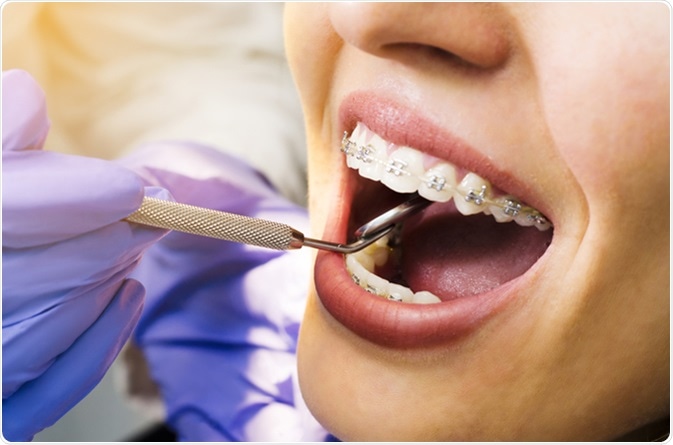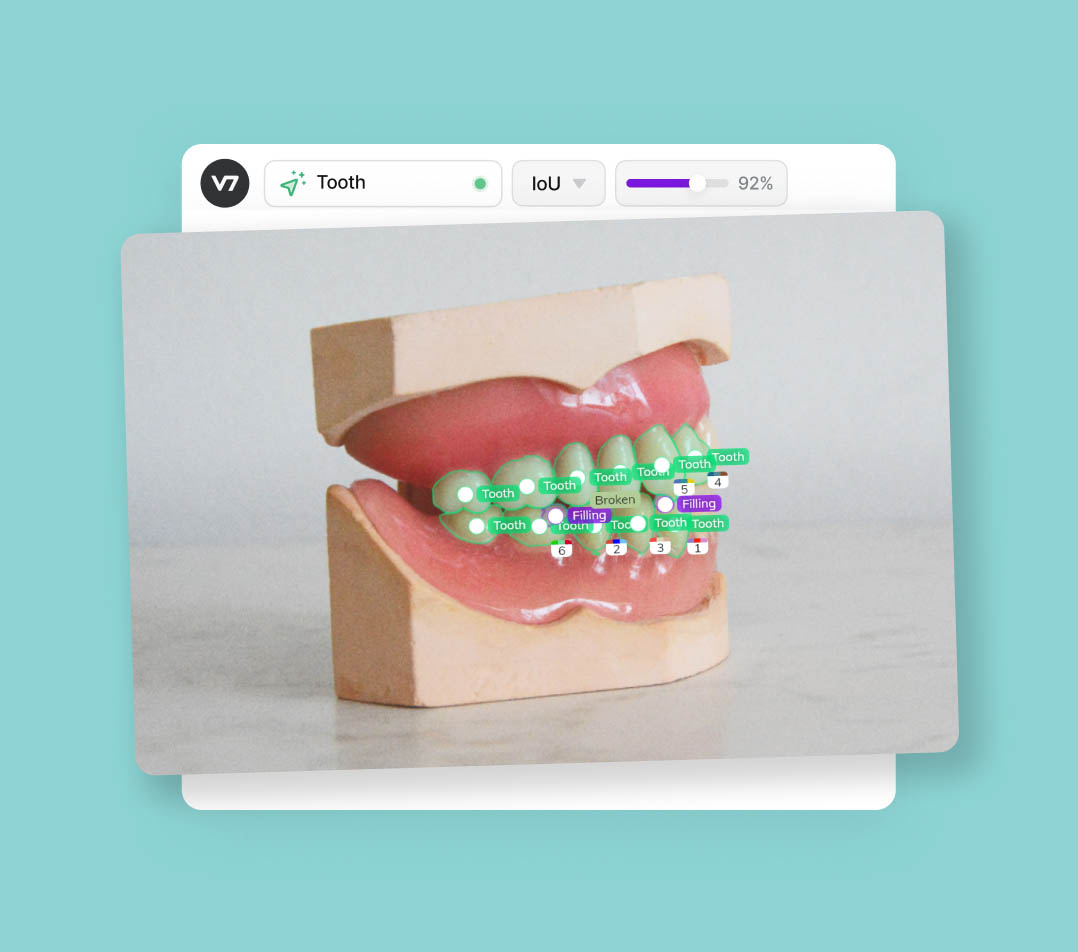Image processing tools enhance dental diagnostics by improving image quality and enabling precise treatment planning. They streamline workflows and support better patient outcomes.
Image processing tools play a crucial role in modern dental applications. These tools improve the clarity and detail of dental images, enabling more accurate diagnoses. Enhanced images assist dental professionals in identifying issues such as cavities, root canal problems, and gum diseases more effectively.
These tools support various imaging techniques, including X-rays, CT scans, and 3D imaging, making them versatile for different dental needs. Additionally, image processing software often includes features like measurement tools and automated analysis, which aid in treatment planning and monitoring. Overall, these tools are indispensable for enhancing dental care and ensuring precise, efficient, and effective patient treatment.
The Evolution Of Dental Imaging
Dental imaging has transformed dramatically over the years. New technologies have made diagnoses faster and more accurate. Understanding this evolution helps appreciate the tools available today.
From X-rays To 3d Imaging
X-rays were the first imaging tools used in dentistry. They helped dentists see inside teeth and gums. Traditional X-rays were two-dimensional and only provided limited information. Over the years, dental imaging has evolved significantly.
3D imaging is now a game-changer in dental care. This technology creates three-dimensional images of teeth. It allows dentists to see teeth from different angles. 3D imaging is more detailed and accurate than traditional X-rays.
| Imaging Technology | Advantages |
|---|---|
| X-Rays | Basic internal view, widely available |
| 3D Imaging | Detailed, multi-angle views, higher accuracy |
Innovations In Dental Diagnostics
Recent innovations in dental diagnostics have revolutionized patient care. Advanced tools now provide more detailed images and better diagnostics. These tools help in early detection of dental issues.
- Intraoral Cameras: These small cameras capture detailed images inside the mouth. They help in identifying cavities and other dental issues early.
- CBCT Scans: Cone Beam Computed Tomography (CBCT) provides 3D images of teeth, soft tissues, and nerve pathways. It is essential for complex dental procedures.
- Digital Radiography: This technology uses digital sensors instead of traditional film. It provides instant images and reduces radiation exposure.
These innovations have made dental care more effective. They help dentists make better decisions and provide better treatment.
Key Image Processing Tools In Dentistry
Dentistry has evolved with advanced image processing tools. These tools enhance diagnosis and treatment. They offer precision and efficiency in dental procedures. Explore the key image processing tools in dentistry.
Cad/cam Technology
CAD/CAM technology stands for Computer-Aided Design and Computer-Aided Manufacturing. It helps in designing dental restorations. This includes crowns, veneers, and bridges. The process starts with a digital impression. This digital file is then used to create a precise restoration.
| Benefits | Details |
|---|---|
| Accuracy | Ensures precise fitting of restorations. |
| Speed | Reduces time needed for dental procedures. |
| Customization | Enables personalized dental restorations. |
Dentists use CAD/CAM technology to create ceramic restorations. This technology reduces the risk of human error. It also improves patient satisfaction.
Intraoral Scanning
Intraoral scanning captures detailed images of a patient’s mouth. It uses a small, handheld device. The scanner produces a digital impression. This digital impression replaces traditional molds.
- Comfortable for patients.
- Provides accurate digital models.
- Speeds up the treatment process.
Dentists can view detailed 3D images. This allows for precise treatment planning. It enhances communication with dental labs.
Intraoral scanners are an essential tool in modern dentistry. They improve efficiency and accuracy. Patients benefit from a more comfortable experience.
Enhancing Precision With Software
Image processing tools are revolutionizing dental care. These tools enhance precision and improve diagnostics. Software solutions play a crucial role in this transformation. Let’s explore how these software tools bring more accuracy to dental applications.
Algorithm-driven Analysis
Modern dental software uses algorithm-driven analysis. Algorithms help in detecting cavities, gum disease, and other dental issues. They analyze images quickly and accurately. This reduces human error and saves time.
Algorithms also help in tracking dental changes over time. They compare new images with older ones. This helps in monitoring the progress of treatments. Dentists can make better decisions based on accurate data.
Custom Software Solutions
Many dental practices use custom software solutions. These solutions are tailored to meet specific needs. Custom software can integrate with existing systems. This makes it easier for dentists to manage patient records.
Custom software also offers advanced features. These include 3D imaging, virtual simulations, and patient education tools. Such features improve patient care and engagement.
Table Of Key Features
| Feature | Benefit |
|---|---|
| Algorithm-Driven Analysis | Reduces human error |
| Custom Software | Integrates with existing systems |
| 3D Imaging | Enhances diagnostic accuracy |
| Virtual Simulations | Improves patient understanding |
Benefits Of Image Processing Tools
- Quick and accurate analysis
- Better monitoring of dental changes
- Advanced features for improved patient care
- Reduced human error

Credit: www.facebook.com
Applications In Orthodontics
Image processing tools have revolutionized dental care, especially in orthodontics. These tools help dentists create precise treatment plans. They also improve the design and fitting of braces and aligners. This technology ensures better patient outcomes and faster treatments.
Braces And Aligners
Braces and aligners are common orthodontic treatments. Image processing tools make these devices more effective. By using 3D imaging, dentists can create detailed models of a patient’s teeth. These models help in designing braces and aligners that fit perfectly.
Aligners, such as Invisalign, benefit greatly from image processing. The software can simulate how teeth will move. This ensures that each aligner is designed to achieve the desired movement. Patients get a series of custom aligners that gradually shift their teeth.
Treatment Planning
Treatment planning is crucial in orthodontics. Image processing tools help in creating accurate plans. These tools can analyze X-rays and 3D scans. They provide detailed information about tooth position and jaw structure.
Dentists can use this data to predict treatment outcomes. They can also identify potential issues before they arise. This ensures a smoother treatment process and better results for patients.
Here are some benefits of using image processing tools in treatment planning:
- Precision: More accurate diagnosis and treatment plans.
- Efficiency: Faster treatment times.
- Visualization: Clear visuals for patient understanding.
- Customization: Tailored treatments for individual needs.
Image processing tools are essential in modern orthodontics. They help create better braces and aligners. They also improve treatment planning, leading to better patient outcomes.
Impact On Dental Surgery
Image processing tools have transformed dental surgery, making procedures safer and more precise. These tools improve various aspects of surgery, resulting in better outcomes for patients. Let’s explore the significant impact on dental surgery.
Preoperative Planning
Preoperative planning is crucial for successful dental surgeries. Image processing tools help dentists create detailed treatment plans. These tools generate 3D models from dental scans, providing a clear view of the patient’s oral structure.
Using these models, dentists can:
- Identify potential complications
- Determine the best surgical approach
- Reduce surgery time
Here’s a table showing the benefits of image processing tools in preoperative planning:
| Benefit | Explanation |
|---|---|
| Enhanced Visualization | 3D models offer a clear view of the oral anatomy. |
| Risk Reduction | Potential issues are identified before surgery. |
| Efficiency | Detailed plans reduce overall surgery time. |
Navigational Surgery Support
Navigational surgery support ensures accuracy during dental procedures. Image processing tools provide real-time guidance, helping surgeons navigate complex areas.
These tools offer several advantages:
- Precise implant placement
- Real-time feedback
- Reduced risk of errors
An ordered list of steps for navigational surgery support:
- Upload patient scans
- Generate 3D model
- Plan surgical route
- Receive real-time navigation during surgery
Image processing tools have revolutionized dental surgery, making it safer and more effective.

Credit: www.offthecusp.com
Benefits For Endodontics
Image processing tools bring numerous benefits to endodontics. They aid dentists in diagnosing and treating dental issues with high accuracy. These tools enhance the quality of care for patients undergoing endodontic treatments.
Root Canal Imaging
Root canal imaging is crucial for successful endodontic therapy. Image processing tools help dentists get clear, detailed images of the root canals. With these images, they can identify problems that are hard to see with the naked eye.
- Detailed Visualization: Dentists can see the complex root canal systems.
- Early Detection: Issues are spotted early, preventing further complications.
- Enhanced Diagnosis: Accurate images lead to better diagnosis and treatment plans.
Precision In Endodontic Therapy
Precision is vital in endodontic therapy. Image processing tools ensure that treatments are both accurate and effective. Dentists can plan their procedures with greater confidence.
- Accurate Measurements: Tools provide precise measurements of root canals.
- Minimized Errors: Reduces the risk of human error in treatments.
- Improved Outcomes: Leads to better treatment outcomes and patient satisfaction.
Image processing tools are revolutionizing endodontics. They provide clarity, precision, and improved patient outcomes.
Challenges And Solutions
Image processing tools have revolutionized dental applications. These tools help dentists diagnose and treat dental problems more effectively. Yet, these advancements come with their own set of challenges. Understanding these challenges and finding solutions is crucial for maximizing the benefits of image processing tools in dental care.
Data Security Concerns
Data security is a major concern in dental image processing. Patient data must be protected to ensure privacy. Unauthorized access can lead to data breaches and misuse.
Encryption helps protect sensitive data. Encrypted data is harder to access without proper authorization. This ensures that patient information remains secure.
Access control is another effective solution. Only authorized personnel should have access to patient data. This reduces the risk of unauthorized access.
Overcoming Technical Limitations
Technical limitations can hinder the effectiveness of image processing tools. These limitations include low image resolution and slow processing speeds.
High-resolution cameras can improve image quality. Clearer images help in better diagnosis and treatment planning. Investing in quality equipment is essential.
Advanced algorithms can speed up image processing. Faster processing saves time and improves efficiency. Implementing these algorithms ensures optimal performance.
| Challenge | Solution |
|---|---|
| Data Security | Encryption and Access Control |
| Low Image Resolution | High-Resolution Cameras |
| Slow Processing | Advanced Algorithms |
Addressing these challenges ensures the effective use of image processing tools. This leads to better patient care and more accurate diagnoses. By focusing on security and technical improvements, dental professionals can fully leverage these advanced tools.

Credit: www.news-medical.net
Future Trends In Dental Image Processing
The field of dental image processing is evolving rapidly. New technologies are transforming dental care. These advancements make treatments faster and more accurate. Let’s explore some exciting future trends in this area.
Ai Integration
Artificial Intelligence (AI) is changing dental image processing. AI algorithms help identify dental issues quickly. They analyze images with high precision. AI can detect cavities, gum diseases, and even early signs of oral cancer.
Dentists use AI for better diagnosis and treatment planning. AI tools reduce human error and save time. They offer personalized care for each patient. The integration of AI is enhancing the quality of dental services.
Advances In 3d Printing
3D printing is another game-changer in dental image processing. It allows the creation of dental models, crowns, and implants. These models are highly accurate and fit perfectly.
3D printing reduces the time required for dental procedures. It also lowers costs and improves patient comfort. Dentists can now offer same-day solutions for many dental problems. The future of 3D printing in dentistry looks very promising.
| Technology | Benefits |
|---|---|
| AI Integration | Quick diagnosis, high precision, reduced human error |
| 3D Printing | High accuracy, cost-effective, same-day solutions |
Frequently Asked Questions
How Is Digital Imaging Used In Dentistry?
Digital imaging in dentistry helps diagnose issues with X-rays and intraoral cameras. It enhances accuracy and speeds up treatment planning.
How Is Dental Imaging Applied In The Dental Setting?
Dental imaging helps diagnose issues, plan treatments, and monitor oral health. It includes X-rays, CT scans, and digital imaging.
What Are The Post Processing Functions For The Digital Image?
Post-processing functions for digital images include noise reduction, contrast adjustment, sharpening, color correction, and cropping. These enhance image quality and visual appeal.
What Is A Dental Image?
A dental image is a visual representation of teeth, gums, and jawbones, used by dentists for diagnosis and treatment planning.
Conclusion
Embracing advanced image processing tools can revolutionize dental practices. These tools enhance diagnostic accuracy and treatment planning. Incorporating them into daily operations boosts efficiency and patient satisfaction. Stay ahead by integrating these technologies into your dental practice. Investing in image processing tools ensures cutting-edge care and a competitive edge in the dental industry.







